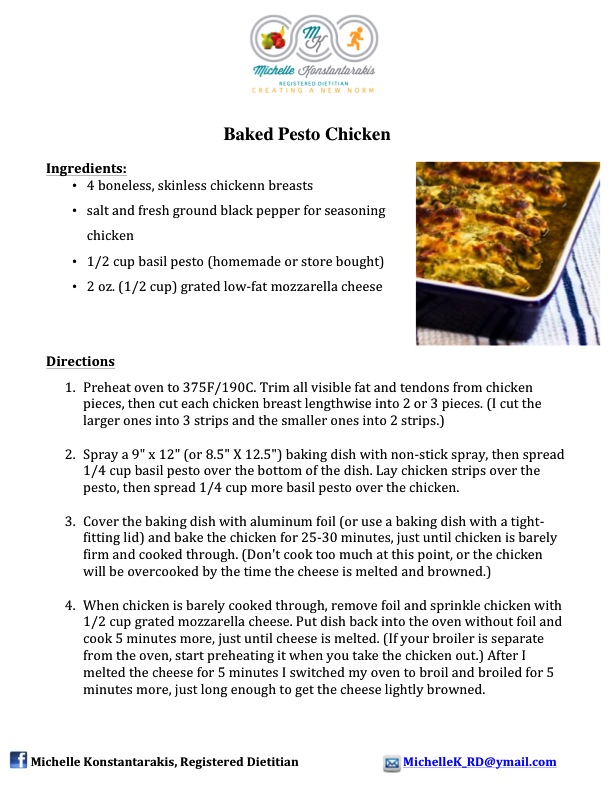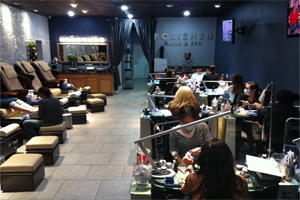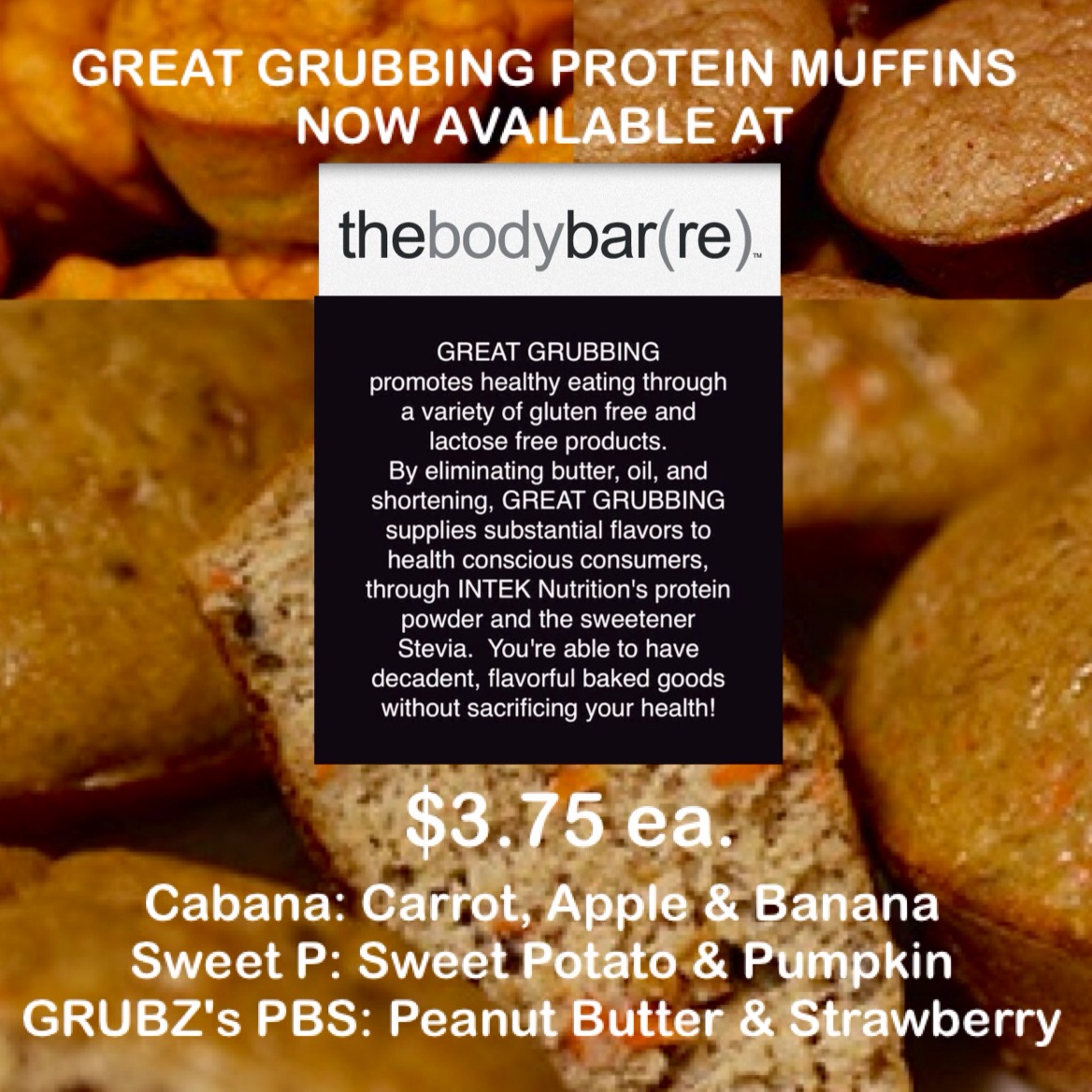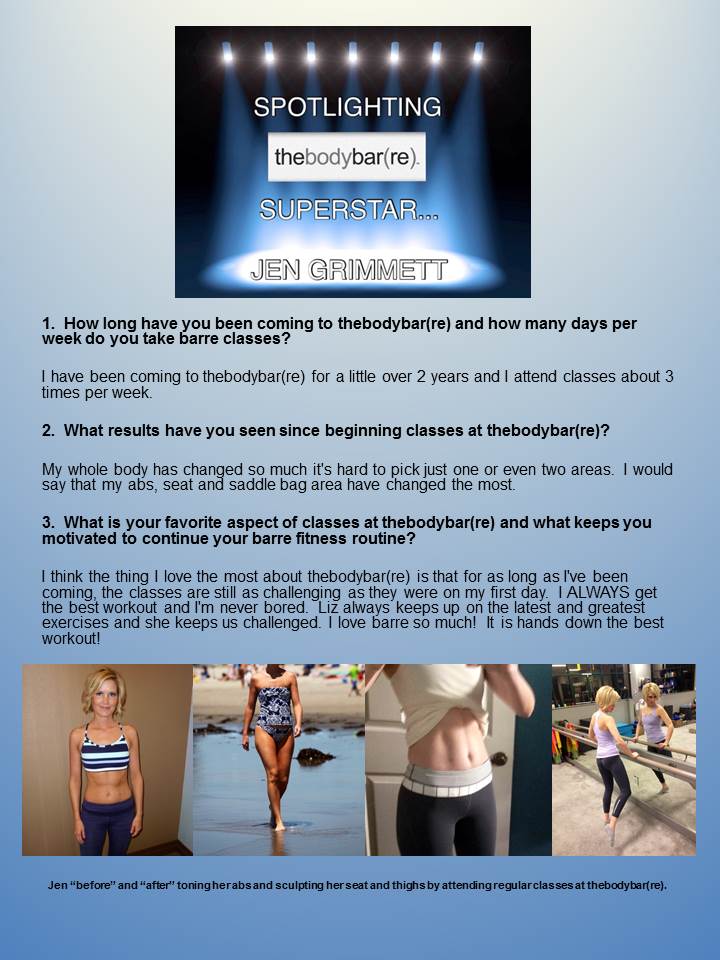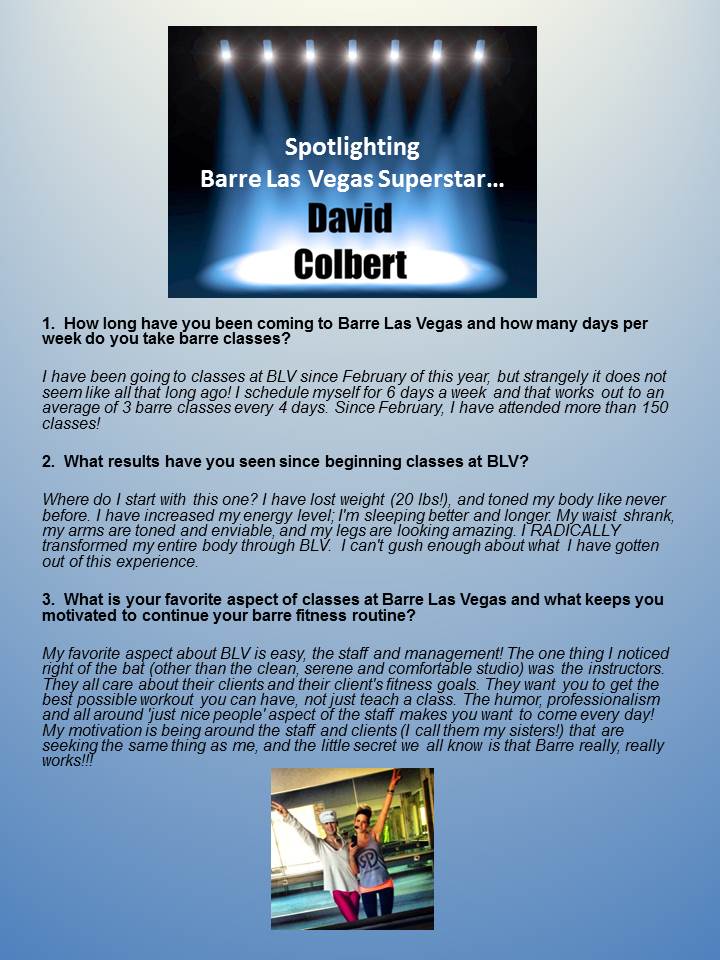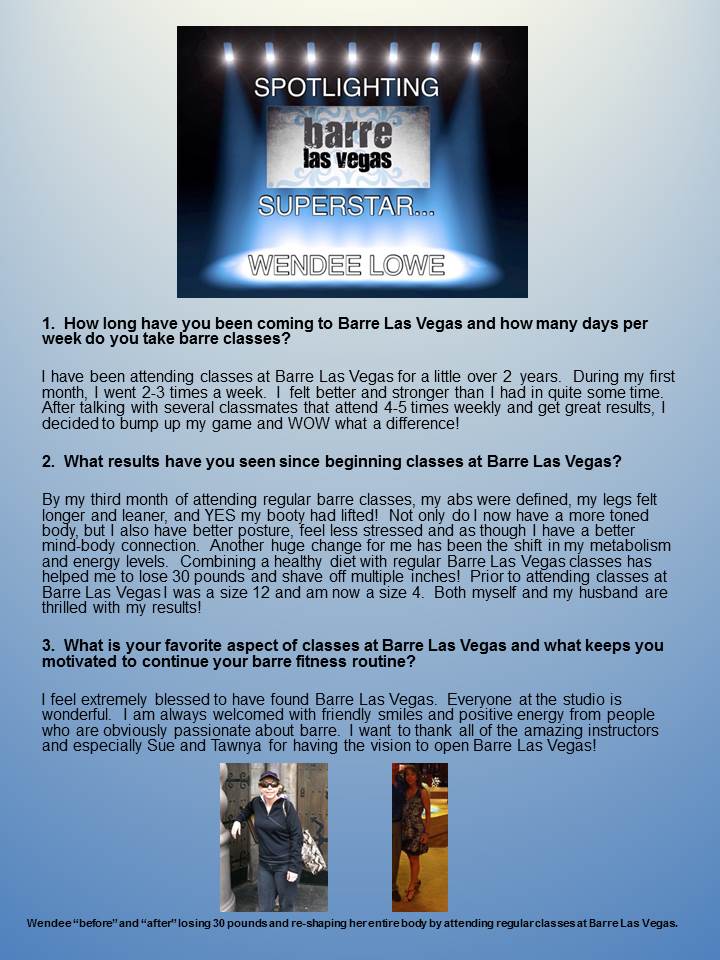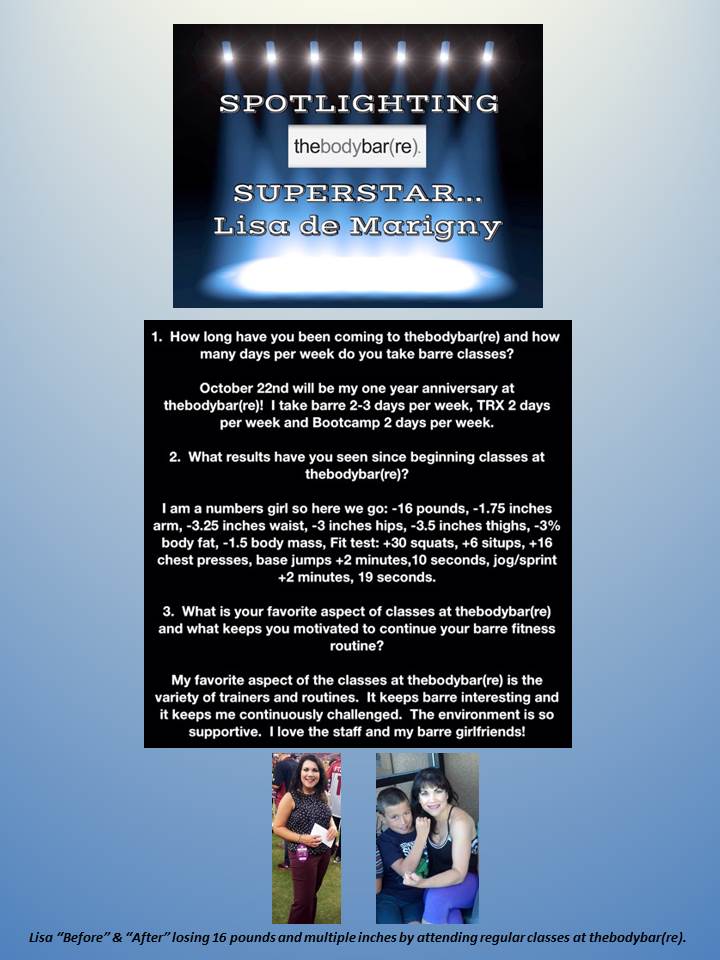Baked Pesto Chicken
In (re)ceipes for successPolished
In (re)commendedAfter a week of hard workouts, our clients love rewarding themselves with high quality gel manicures and pedicures at Polished.
Location: 7575 S. Rainbow Blvd. Ste. 107 Las Vegas, NV 89139.
Great Grubbing
In (re)commendedOur clients are absolutely loving the healthy and nutritious edibles from locally-owned, Great Grubbing! Stop by our studio anytime to purchase some of Great Grubbing’s delicious, protein-filled and guilt-free muffins.
Raising the Barre: The Benefits of a Barre Workout
In (re)ad all about itby Lara Hassan, Founder of Spiral Body
It goes without saying that you can’t get the butt you want by just sitting on it. Most women and men around the world desire having a great derriere and let’s face it; it could only be achieved by working out, a good diet and by drinking plenty of water.
As a trainer for 13 years I have done a lot of research on what works and what doesn’t. I grew very fond of barre methods, as it’s a natural progression from my Pilates background, I find that it complements Pilates and emphasises training the seat, which is the base of the powerhouse in a healthy body.
Why does it differ from other methods?
Most barre classes focus on tucking and high repetitions, which could potentially cause damage to the pelvic region, and high repetitions encourage the build up of lactic acid, which is rather toxic. The aim of the method is to tone and sculpt whilst avoiding, damage, injury and muscular imbalance.
Barre workouts are great not just for toning, also for alignment and posture. Each class provides a cardio element in addition to a strength and stretch element. With the cardio element you will get the aerobic conditioning that aids for improving metabolism and weight loss, the ballet inspired moves will strengthen and tone the body all over starting from the feet.
Core work is essential in barre methods; Pilates inspired moves that work the body from the inside out. A good barre class will contain every element of fitness any person needs providing they are healthy and able to move.
The Benefits of Barre
Weight loss: the barre targets the largest muscle groups in the body (like the thighs and gluteus)- the larger the muscle, the more calories burned! As you continue to attend class, you will begin to build more lean muscle mass, raising your metabolic rate, which can help you produce more energy and burn more calories. Pair the barre exercise routine with a healthy diet and you will absolutely see the results.
Cellulite reduction: aerobic activity is a key factor in getting rid of orange peel skin! Barre exercises are fat blasting; it focuses on the lower body and designed to help you drop pounds. If you want to fit into your skinny jeans, have killer legs and a great looking butt, or you just want to go from a good shape to a better one, barre classes are for you!
Increased bone health: the isometric movements in the barre method protect your bone health; weight-bearing exercises are vital to overcome any bone density issues.
Core strength and improved posture: Besides reducing your waistline and improving posture, a strong core is achieved through the Pilates based abdominal work and floor barre exercises. A strong core can increase your performance in all other activities in your life, whether you’re playing tennis or just lifting your kids. Without a strong core, your muscles cannot move freely or efficiently, so you will tend to overuse your lower back muscles and put additional stress on other joints- commonly leading to aches, pains and injuries.
The beauty of the barre is that we emphasise engaging your core throughout all of class for compounded results – so even if we are working the arms or thighs, we are always engaging, and therefore strengthening, the core as well.
Flexibility: Ballet stretches are a major part of the session done at the end of each interval, the muscles are elongated, bulk is reduced and therefore balance and alignment are achieved.
Perfecting the Proper Pelvic Tuck
In (re)ad all about itBy Boston Body Pilates
The Barre workout is one of the best ways to tone your abdominals, thighs and glutes. If you’ve taken a barre class, you’ve likely heard the term “Pelvic Tuck” in both standing and floor work many times. So what exactly is the “Pelvic Tuck”?
When done properly, a Pelvic Tuck lengthens your spine – engaging a balance of abdominal, core and gluteal muscles. When Lotte Burke first created the Barre workout, she included the Pelvic Tuck as a staple position in many of her effective barre exercises. The Pelvic Tuck allows one to engage muscles while keeping the low back and hip area released and safe.
To understand how to properly achieve the correct Pelvic Tuck, we first have to understand the three Pelvic positions during standing barre work.
- NeutralNeutral brings your pelvis into a balanced position in which there appears to be a vertical line with pubic bone directly under the hip bones. In a neutral spine your back should feel completely released, but your abs and pelvic floor are still engaged.
- Anterior tiltThe anterior tilt looks like an arched back (concave near the small of your back), where your hip bones are slightly in front of your pubic bone. An excessive anterior tilt will feel like you are over-arching your lumber spine, which can create discomfort in your low back and can lead to tight hip flexors. Those who have more of a natural anterior tilt tend to have lordosis, an over curvature of the lumbar spine, or low back.
- Posterior tiltA posterior tilt is the opposite position in which your pubic bone is tilted in front of your hip bones giving you a feeling of your bottom being tucked under. An excessive posterior tilt will feel as if you are tucking your bottom under so much so that you feel a strain in your low back extensors, and you will likely need to clench your glutes and hamstrings to help maintain this position. This can also lead to overly tight hip flexors. Those who have more of a natural posterior tilt tend to have kyphosis, an over curvature of the thoracic spine, or upper back.
The Pelvic Tuck “Do’s”
- Less is more: This is a tiny movement that is barely visible.
- Find your neutral first. Stand in front of a mirror sideways. Rock your weight forward towards the balls of your feet and stand tall. Your hip bones will be directly above your pubic bone creating a vertical line. Your effective Pelvic Tuck position is not too far from your neutral.
- Movement comes from muscle activation, a balance of abdominal, inner core and gluteal activation. From your neutral position. Exhale and pull abs in and up while lifting through the pelvic floor. Feel a very slight tipping up of the pubic bone with lower abdominal engagement.
- Released and comfortable position of the lower back, hips and pelvis. Keep abdominals and pelvic floor engaged and release any tension in low back, hips and pelvis. Stop if you feel back tension.
- Lengthen your spine, reaching your tail bone away from the crown of your head. Think about your feet pressing firmly through the floor as you reach the crown of your head to the sky. This “opposition” helps you feel the muscle activation in the front and back of your body that is an essential foundation of the Pelvic Tuck.
- Engage pelvic floor, low abs, and inner core muscles in the front of your body. Think “abs in and up.” Hug sits bones in your lower glutes. Balancing the muscles in front and back of your body creates a safe and effective pelvic tuck.
The Pelvic “Don’ts”
- Please- no clenching! Activate gluteal muscles firmly without squeezing.
- Don’t over tuck your Pelvis. This creates tight hip flexors and can damage your low back.
- Bottom line: If it’s hurting your lower back or hips, recheck your position.
Focus on your “Dos” and you’ll be well along the path to get the most out of your barre workout.

